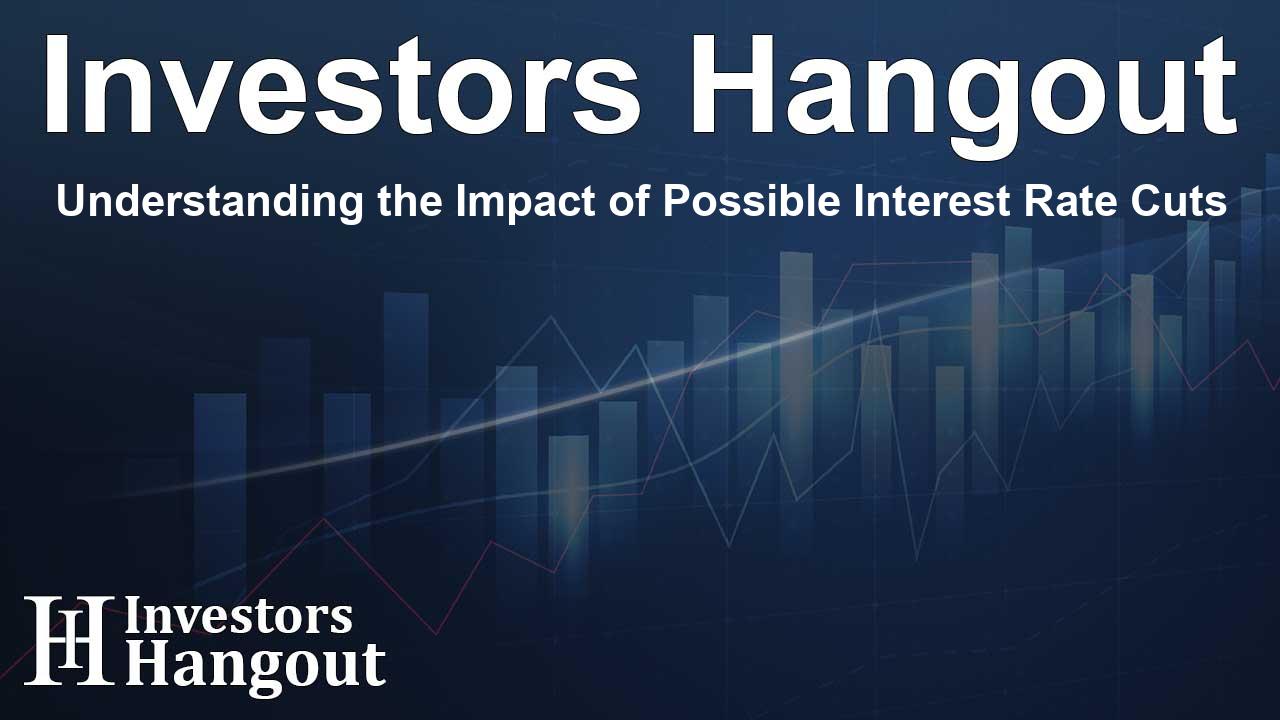Understanding the Impact of Possible Interest Rate Cuts

The Potential for Interest Rate Cuts
With recent discussions surrounding the Federal Open Market Committee (FOMC) minutes, many Federal Reserve members are contemplating interest rate cuts. Although there are varying opinions on the right course to take, it’s clear that the economic landscape could shift dramatically. The uncertainty surrounding these decisions inevitably leads to speculation about the motives of some members, especially in light of external pressures like those from politicians.
Political Influence on Economic Decisions
Former President Trump has been vocal about his desire to see lower interest rates. His criticisms directed towards Jerome Powell, the current Fed chairman, have raised eyebrows and ignited debates about the political pressures facing the Federal Reserve. Would a change in leadership impact monetary policy, and would this lead to a supercycle in commodities? This question remains pertinent as policymakers navigate a complex economic environment.
Current Economic Observations
Amidst these discussions, the nation grapples with the concepts of stagflation and disinflation. A comprehensive analysis reveals that both phenomena could define the near future of economic conditions. Interestingly, the trifecta of inflation indicators is producing intriguing trends, notably in the precious metals market. The narrowing ratio between gold and silver suggests a need for further adjustments in the commodity landscape. Meanwhile, the U.S. dollar continues to show signs of a downtrend, interspersed with minor rallies.
Commodity Market Dynamics
Conversely, sugar appears to be nearing a potential bottom, indicating there may be opportunities worth exploring. However, the long bonds chart, especially TLT, indicates that a downward trend in rates may be on the horizon. Market perceptions can significantly influence bond prices, as evidenced by the current positive sentiment surrounding long bonds.
Market Trends and Expectations
As the market anticipates these rate adjustments, participants must remain vigilant. Typically, the adage “buy the rumor, sell the news” applies, suggesting that market movements might reflect speculation rather than actual events. The fluctuations in long-term Treasury bonds are acting as a barometer for anticipated rate drops.
The Role of Momentum and Phases
In a recent analysis, the performance of long bonds during market transitions illustrated a bullish phase change. As observed in earlier June reports, momentum indicators had confirmed this shift before the prices followed suit, emphasizing the predictive power of market trends.
Understanding Key Market Indicators
For those tracking ETFs, specific pivotal levels stand out. For instance, the S&P 500 (SPY) has a support level at 618, while the Russell 2000 (IWM) sits at a pivotal 218. Similarly, Dow (DIA) and Nasdaq (QQQ) demonstrate crucial support levels that investors would do well to monitor.
Investment Strategies Moving Forward
As we approach these potential shifts in interest rates, market participants are encouraged to devise strategies that account for volatility. Staying informed about major sectors like regional banks, biotechnology, and even the cryptocurrency market (BTCUSD) could present opportunities for savvy investors.
Frequently Asked Questions
What are the implications of rate cuts on the economy?
Rate cuts can lower borrowing costs, potentially stimulating spending and investment, but can also signal economic concerns.
How do political factors influence Fed decisions?
Political pressure can affect policymakers' decisions, leading to speculation about their independence and the impact of public sentiment.
What are the signs of stagflation?
Stagflation is typically indicated by stagnant economic growth, high unemployment, and inflation, creating a challenging economic environment.
Why monitor bond markets during rate changes?
The bond market often reacts before rate changes happen, serving as a predictive indicator of future economic conditions.
What should investors focus on in a changing rate environment?
Investors should assess which sectors may benefit from lower rates and stay cautious about inflation indicators and market momentum.
About The Author
Contact Addison Perry privately here. Or send an email with ATTN: Addison Perry as the subject to contact@investorshangout.com.
About Investors Hangout
Investors Hangout is a leading online stock forum for financial discussion and learning, offering a wide range of free tools and resources. It draws in traders of all levels, who exchange market knowledge, investigate trading tactics, and keep an eye on industry developments in real time. Featuring financial articles, stock message boards, quotes, charts, company profiles, and live news updates. Through cooperative learning and a wealth of informational resources, it helps users from novices creating their first portfolios to experts honing their techniques. Join Investors Hangout today: https://investorshangout.com/
The content of this article is based on factual, publicly available information and does not represent legal, financial, or investment advice. Investors Hangout does not offer financial advice, and the author is not a licensed financial advisor. Consult a qualified advisor before making any financial or investment decisions based on this article. This article should not be considered advice to purchase, sell, or hold any securities or other investments. If any of the material provided here is inaccurate, please contact us for corrections.
